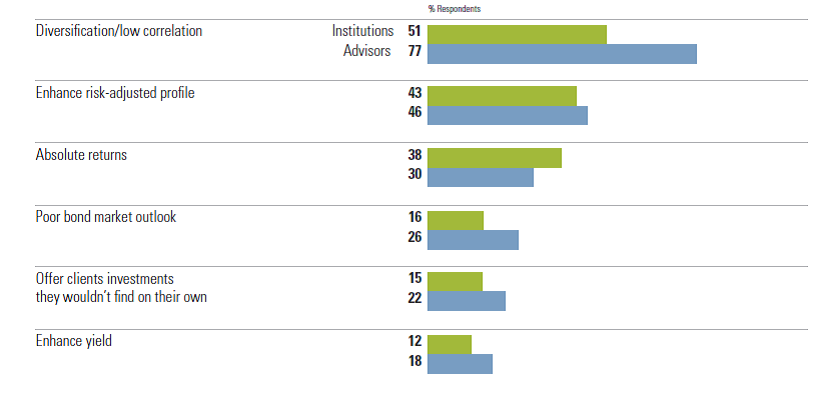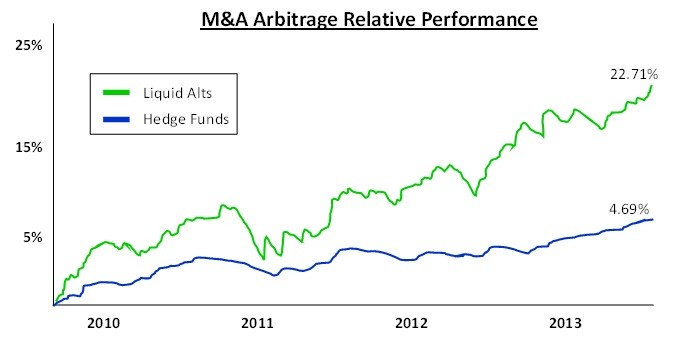Mutual Funds Use Alternative Strategies
Post on: 1 Июль, 2015 No Comment

Mutual Funds Use Alternative Strategies
August 10, 2012 Karen DeMasters
Portfolio manager Stephen Roseman created a mutual fund that uses hedge fund strategies and makes hedge fund-style opportunities available to investors with as little as $2,500. He’s part of a growing trend of employing alternative investment strategies in mutual funds.
Using hedge fund strategies for mutual funds became popular after the crisis of 2008, says Mallory Horejs, an alternative investments analyst for Morningstar. Until then, investors did not see the need for alternative-style investments within mutual funds. The 2008 crisis prompted investors to demand a vehicle to smooth out the highs and, more importantly, the lows of the market.
Many of the hedge fund-style mutual funds are small and most are new, although a few have been around for a couple of decades, says Horejs. They succeed in eliminating the downside of the market but they also miss the top of the upside, she says.
There are now 322 such funds and they have different management techniques. The fees for these funds are higher than for traditional mutual funds, in part because the trading strategies are more complex and managers charge more for that. Also, because the funds are new their fees are not disbursed across a broad range of clients as yet, Horejs says.
The Thesis Flexible Fund (TFLEX), which was launched by Roseman’s company, New York City-based Thesis Fund Management LLC, in March 2010, is a long-short equity fund typically has 25 to 40 long positions and 30 to 50 short positions at a given time.
The long-short equity fund is not tied to any index or any particular type of investment like small cap, or large cap. Its manager has the flexibility to go wherever the firm feels there is opportunity. The fund shorts securities that the portfolio manager believes may decrease in value, and the fund can purchase bonds, derivatives, commodities or other products, both domestically and internationally, that could potentially provide additional returns.
Roseman founded Thesis Capital, a long-short equity hedge fund, in 2005.
One thing we brought over from the hedge fund world is that everyone on the investment team at Thesis Fund Management has his or her own money invested in The Thesis Flexible Fund, he says. Also our fund does not hew to a particular index. Risk management, not indexing, is the key to our mutual fund.
We look for investment opportunities trading at a significant discount to tangible value, he says.
Limiting Downside
Others who run hedge-fund-style mutual funds feel the point of these funds is to avoid the volatility of the market. Ricardo L. Cortez, senior portfolio management specialist and president of global distribution for Broadmark Asset Management LLC in New York City, aims to limit both the upside and downside of the market through alternative investments that aren’t tied to an index.
If you limit the downside and do not lose more than 10% when the market is down, you only have to capture one third of the upside to match the market, he says. We are winning by not losing; we concentrate on not losing money.
This strategy is actually the reverse of the traditional buy-and-hold approach to investing, he continues. Most money managers attempt to buy and hold stocks that they expect to appreciate more than the market. But if the market is in a trading range, as it has been for a decade, the better approach, in our opinion, is to carefully manage the downside risk and capture some of the upside. This is what we mean by winning by not losing.

Broadmark is the subadvisor for the Forward Tactical Growth Fund (FTGWX), which launched in 2009 with $1 million dollars in assets. It topped $1 billion early this year. Because it uses hedge fund tactics, the fund is able to go 100% long or 100% short, and can use cash as an actively managed part of the portfolio.
Democratization Of Alternatives
astonfunds.com/funds/aston-lake-partners-lasso-alternatives-fund. Its trademarked strategy, LASSO® Long and Short Strategic Opportunities®, is diversified across the spectrum of mutual funds that utilize alternatives. While the LASSO mutual fund is in its fourth year of operations, Lake Partners launched the LASSO strategy nearly 14 years ago as a separately managed account.
Rick Lake, co-founder of the company with his brother Ron, calls the approach the democratization of alternatives because of its liquidity and low minimum investment threshold. The LASSO mutual fund has a minimum $2,500 investment.
LASSO is designed to help diversify a portfolio and balance more aggressive investments, Lake says. The fund can use a variety of strategies, including long-short equities, long-short fixed income, arbitrage, global macro and others that may be less correlated to the stock market.
In managing LASSO, Lake Partners applies more than two decades of institutional alternative investment research to the growing world of alternative mutual funds. Since the inception of LASSO, the strategy has outperformed the S&P 500 with approximately one-third of the volatility, says Lake.
The 2008 crisis highlighted the need for risk management and alternative strategies in the mutual fund world, Lake says.














